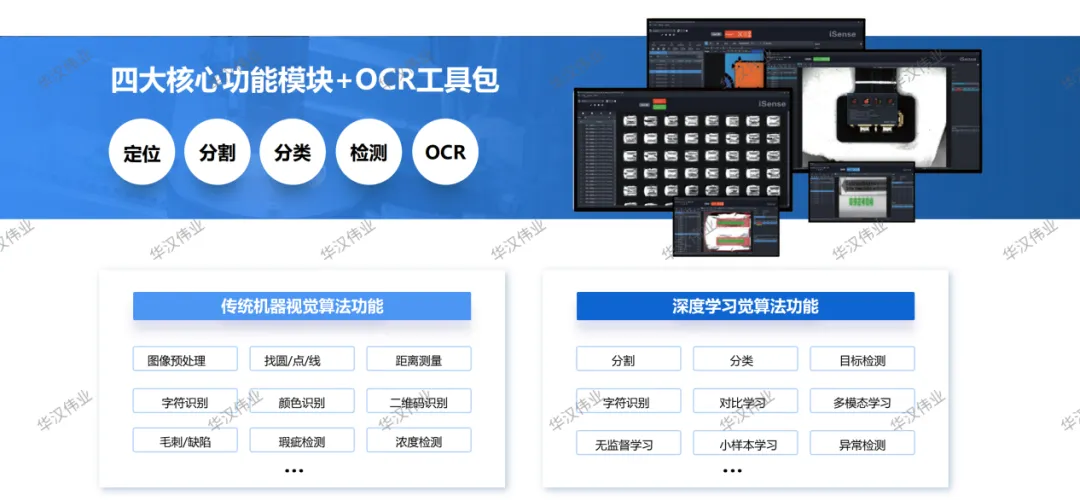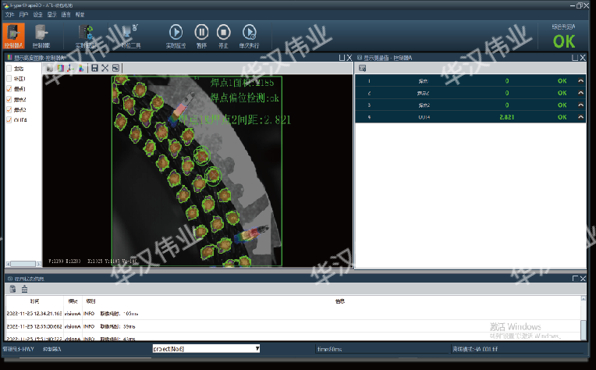
At present, the product forms of modern industrial production are developing towards diversification and diversification. With the complexity of product design and the acceleration of production speed, industrial defect detection is facing unprecedented challenges.
Therefore, how to achieve precise identification of complex and subtle defects while maintaining production efficiency has become an urgent problem to be solved.
Principle of defect detection
Machine Vision Assists Production Automation
Defect detection refers to the detection of surface defects on a workpiece, such as spots, pits, scratches, color differences, defects, and other defects on the surface of the workpiece.
In the process of defect detection, commonly used image processing techniques include digital image processing technology and machine vision technology. Digital image processing technology mainly targets digital images, including image enhancement, filtering, segmentation, and sampling processing techniques. Machine vision technology, on the other hand, is based on segmentation and pattern recognition in digital images. It applies analysis to images in existing scenes, identifies defects through processing, and realizes automated detection of product defects, and locates these defects.
Simply put, machine vision reproduces the ability of humans to interpret images, and the "eyes" are replaced by sensing devices and machine learning algorithm driven visual devices.By using large image datasets for training, deep learning models can interpret the content of a given image for defect and anomaly detection.

(Human visual process)

(Machine vision based on artificial intelligence, can be used for anomaly and defect detection)
Cracking detection difficulties
Relieve the influence of multiple interfering factors
Deep learning technology is integrated into product defect detection, which is different from traditional industrial machine vision that solves problems based on rules. Deep learning completes the establishment of the model by automatically learning a large number of "OK" and "NG" image features and training defect labeling. When encountering new defect types in the future, only the training and optimization of new type defect samples are needed to achieve new defect detection.

HANSWELL
HANSWELLcan easily deal with defects, increasing the detection rate of small defects to over 99%, achieving a labor substitution efficiency of 80%, shortening detection time by about 40%, achieving improvement in defect detection accuracy and efficiency, and significantly reducing labor costs. At present, the vision system solution independently innovated and constructed by Huahan Weiye has been deployed and applied on over 1000 production lines.
Comprehensive detection to overcome project difficulties
Covering defect detection scenarios in multiple fields

In the automotive electronics industry, HANSWELL uses 3D visual imaging and AI empowerment to connect the full chain of flexible customization from data collection, analysis to algorithm precipitation, achieving defect detection of motor stator TIG solder joints, accurately identifying subtle defects, with a missed detection rate of 0, a misjudgment rate of ≤ 1%, and a visual detection accuracy of ± 0.1mm.

In the 3C electronics industry, for the quality inspection of Type-C interface dispensing on mobile phones, Huahan Weiye adopts 3D inspection technology, which can be divided into 14 areas for fine inspection, regional linkage, and reduced configuration,A single photo can accurately detect defects such as excessive or insufficient glue, leaks, and splashes, and can simultaneously detect surfaces A and B, achieving a detection accuracy of ≤ 0.1mm.

HANSWELL deeply integrates AI machine vision technology and various self-developed algorithms to meet the practical application needs of different industries. With advantages such as efficient algorithms, fast recognition, and accurate detection, it provides certain technical support and creates successful cases in different industries.
In the future, we will continue to continuously tackle core technologies, innovate and develop machine vision applications, accelerate the deployment of machine vision solutions in various vertical fields, and become experts in 3D+AI delivery.